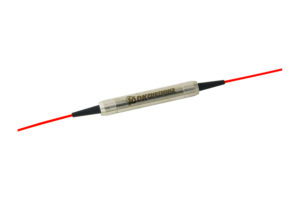The most efficient method for data transmission and light guiding applications is to use fiber optic cables. They can transmit data over long distances across varying bandwidths. That’s why they are more common in demanding industries, such as medical, military, and networking. While both polarized and unpolarized lights can travel through optical fibers, unpolarized light undergoes major losses and distortions over long distances. Hence, to maintain the high efficiency of optical networks, you need polarized light.
To solve this overarching problem, fiber optic polarizers are used. They help in facilitating the strongest and cleanest output signals for optics applications. Fiber optic polarizers are small pieces of cable positioned in line with the fiber to polarize the incoming light. Hence, they are also called in-line polarizers. Polarization-controlled fibers are capable of producing outputs with high intensity and bandwidth without compromising their speed.
In this blog, you will learn different types of fiber cables and their properties like birefringence and polarization.
Types of Fiber Optic Cables
Fiber optical cables are of two types: single-mode and multimode. The number of modes helps you determine how light will propagate across the fiber.
While single-mode fibers can support only one propagation mode, Polarization Maintaining fiber is single-mode fibers too. multimode fibers can have three or more modes of propagation of light waves.
In single-mode fibers, light waves can have different frequencies but they are distributed spatially in a similar way. On the other hand, multimode fibers are designed to have a much large core diameter so that they have higher light gathering capacity and can accommodate more modes of wave propagation.
Though multimode fibers are simpler than single-mode fibers, they have restricted bandwidth and travel distance.
Birefringence and Polarization Properties
Birefringence is the property of optical materials wherein the refractive index is influenced by the polarization direction of the incoming light signals. This property can be commonly seen in nonlinear crystals and various optical fibers. Though ideal fiber cores are perfectly circular; however, it is not practical in the real world because most fibers suffer from mechanical stresses due to various reasons such as bending and handling. The alterations in the geometry of the core can distort the polarization mode along the length of both single and multimode fibers. In that case, a polarization mode will travel in a different space when compared to others.
Does this impact fiber performance? Yes. Lengthened pulses caused by birefringence can result in more noise and lower quality output light. Besides, different materials absorb different polarizations of lights in different ways. Thus, it becomes necessary to control polarization in fibers in most optics applications. To avoid this problem, all you need is to use in-line polarizers and ensure the best quality output signal for your application.


Leave A Comment